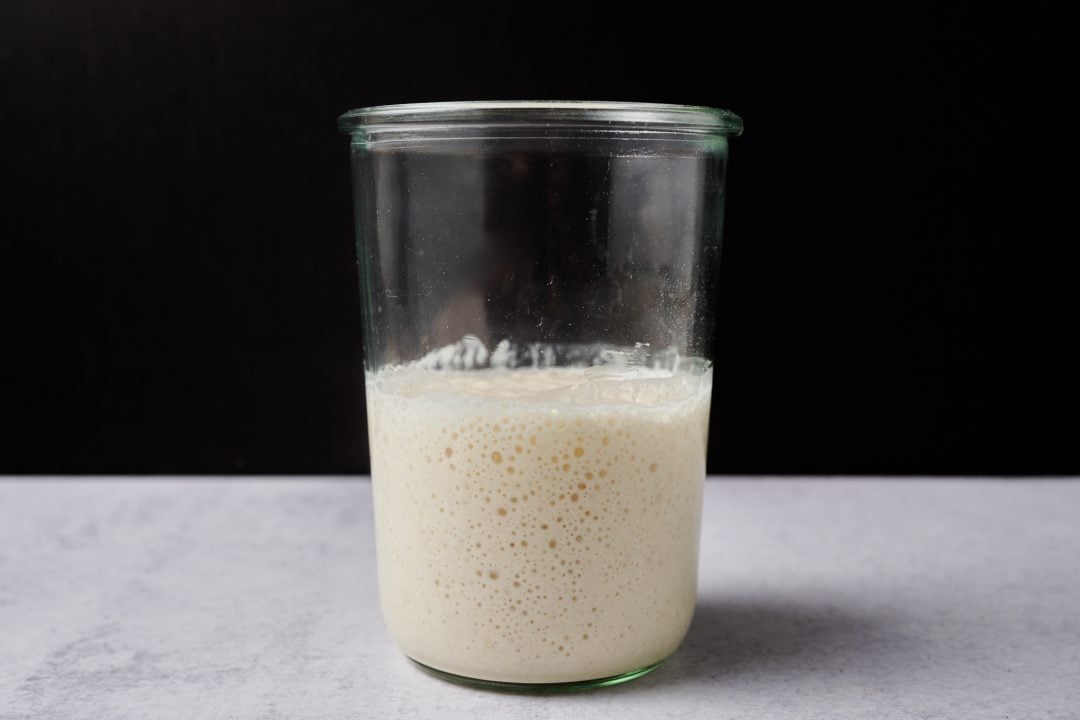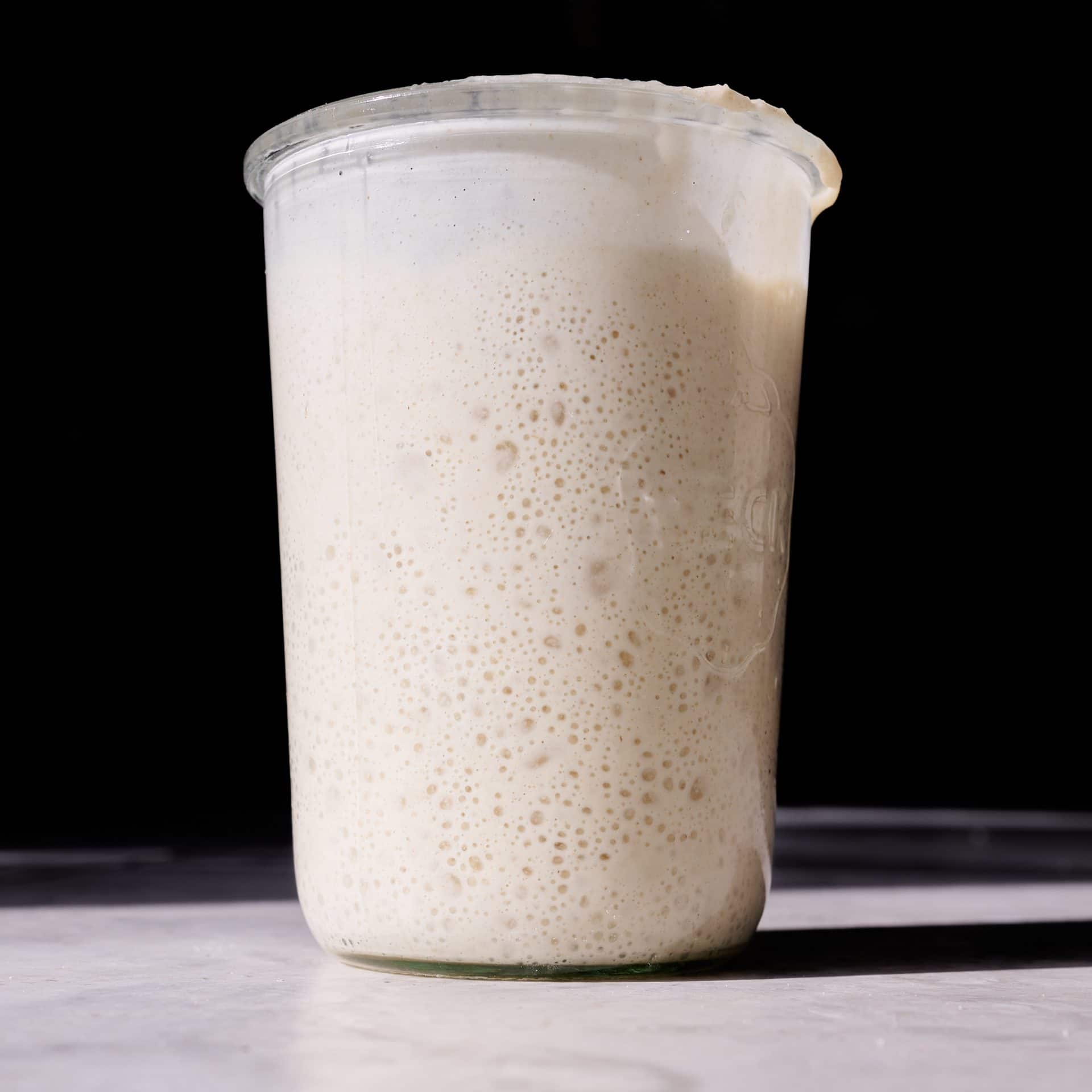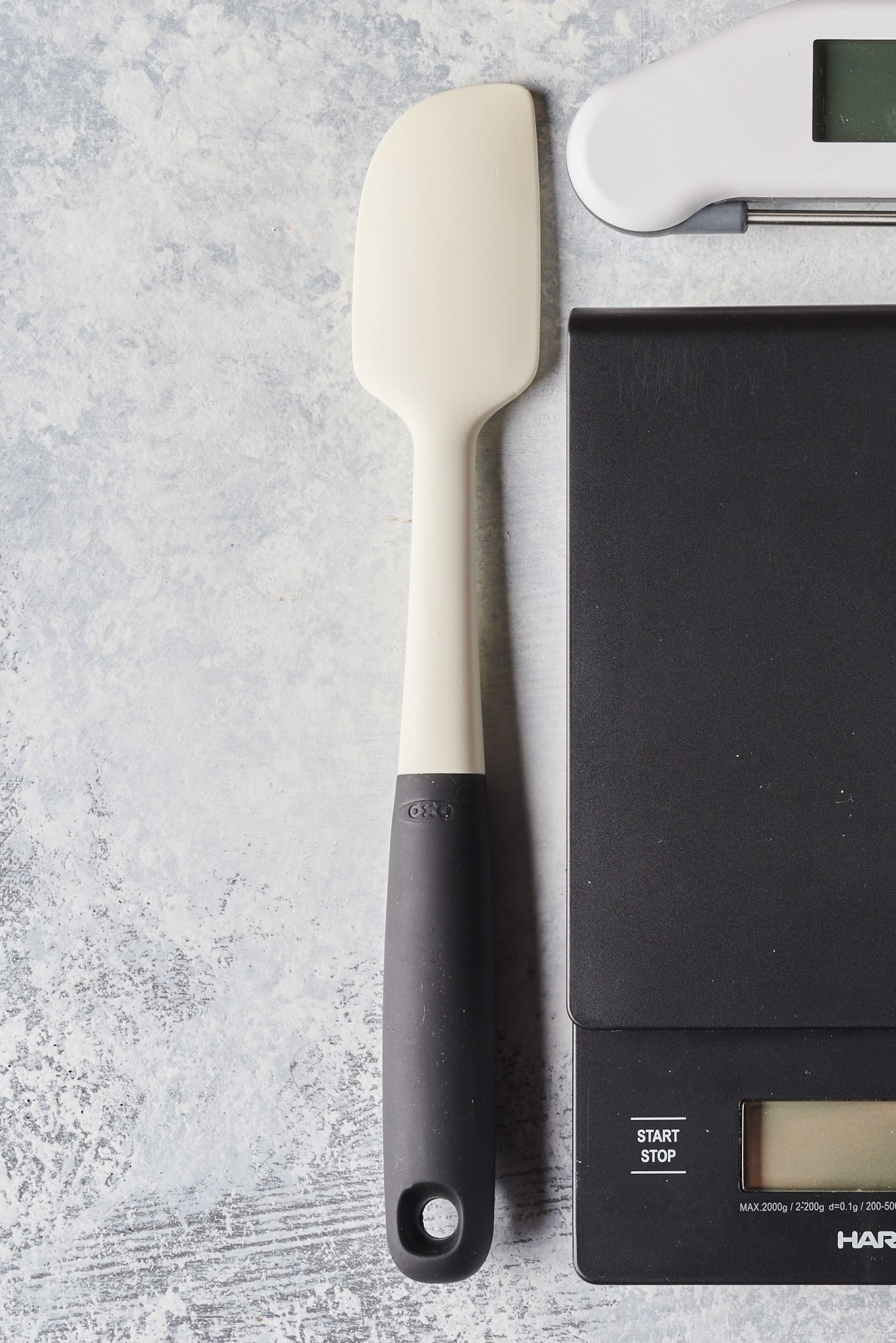I've fed my sourdough starter twice a day for over ten years. That's more than 7,300 feedings, mixing together fresh flour, water, and ripe sourdough starter to keep my decade-old culture healthy and continually fermenting. Because you interact with it so often, having the best jar for your sourdough starter is a big deal. A good jar will save you time since each feeding will be more efficient, cleaner, and downright easier; it really adds up.
As you read this guide, it may seem like I'm strangely passionate about a simple glass vessel. But the reality is when you find exactly the right item for what you need—and perhaps it even exceeds those expectations—you can focus on the important task at hand and not be distracted by the annoyance or even dread of using a sub-par tool.
Each time I go into my kitchen to feed my sourdough starter, I grab the jar, scrape out the contents, and mix things anew. If the jar were a hassle or required more effort, compounded over many years' time, I'd get annoyed and frustrated. Thankfully, after testing countless jars over the years, I've found the best jar for your sourdough starter that makes things easy, clean, and efficient.
Let's dive in.
Real Quick: The Best Jar For Your Sourdough Starter
The best jar for your sourdough starter is a 3/4 Liter 743 Weck glass canning jar. These jars are made from durable glass that makes cleanup easy, either by hand or in the dishwasher. They have straight but slightly tapered sides, making it easy to get a spatula in and out. You can rest the glass lid on top to keep foreign material out. Finally, these jars have almost no creases, bends, or pits that would make it difficult to effectively mix your sourdough starter.
Weck is an old German brand, and their jars are primarily used for canning and preserving, much like a mason jar. These jars are prized for their design simplicity, which I also think makes them elegant.
I often use Weck jars of all sizes (even their tulip jars) in my kitchen for jelly, jam, and other preserves. Plus, they are super handy for making seed soakers, a backup of my sourdough starter, or any other bread-baking task requiring a container.
I've used the same Weck canning jars for over ten years to hold my sourdough starter, and even though I'm constantly testing new jars, these ones are still the best.
What is a Sourdough Starter Jar?
Your sourdough starter is a stiff or liquid mixture that you feed daily and that you use to seed fermentation in bread dough (or to make a levain). When you maintain a sourdough starter for baking, you need a place to hold your starter mixture: your sourdough starter jar. The vessel shouldn't be too small or the starter can overflow, and it shouldn’t be too large because your starter will spread out into a thin layer, thereby reducing fermentation effectiveness. It's also helpful if the jar is see-through and provides some insulation properties.
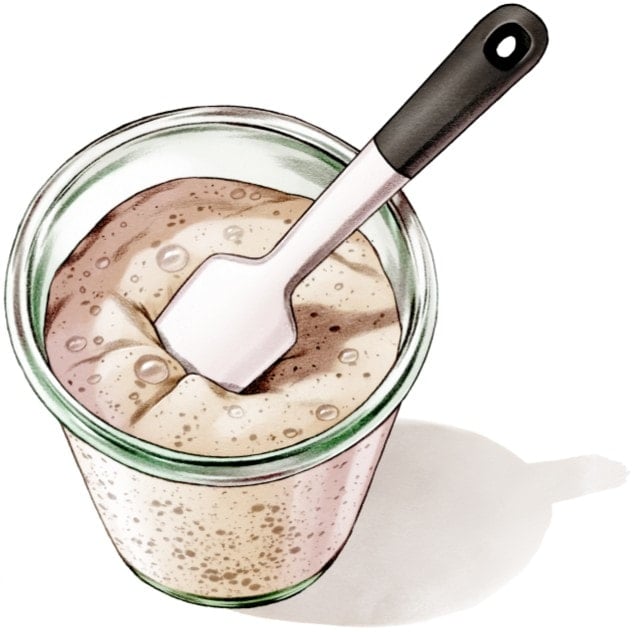
What Makes a Jar Good For a Sourdough Starter?
When you interact with a certain tool daily, the details of it become very important. Small design features have huge implications in the long run, especially when dealing with a wet, gloopy mixture like a sourdough starter.
The criteria for a great sourdough starter jar are:
- Strong and sturdy
- Made of glass or ceramic
- Easy to clean (even better if it's dishwasher safe)
- Straight, tapered sides to make scraping the inside easy
- Few nooks and crannies for the starter to collect and dry
- An easy to use lid
- Economical and long-lasting
Above all, the best jar for your sourdough starter should be easy to use, easy to clean, and not expensive.
The Best Sourdough Starter Jar Material
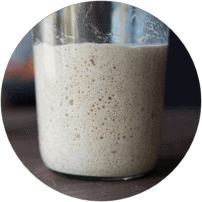
Glass is the best material for a sourdough starter jar. Glass won't degrade over time or absorb aromas or flavors, and most glass jars can safely be washed in the dishwasher. Plus, with glass, you can easily see the signs of sourdough starter fermentation. The downside to glass is that it can shatter. Thankfully, the Weck jars I recommend are incredibly tough, and even when I've dropped a jar from my counter, it didn't shatter.
Other Good Materials For a Starter Jar
While glass is my preferred jar material, I like ceramic as a second option. Ceramic sourdough crocks have thick walls and provide excellent insulation to keep your starter’s temperature consistent. Plus, they're typically easy to scrape and clean out. The downside to these crocks is they usually have a tight opening up top like a mason jar, you can't see through the sides to assess fermentation, and they are usually quite heavy.
Plastic containers, such as deli containers, are also a good option because they can be easily cleaned, reused, and are cost-effective. However, I'm usually weary of storing strong acidic foods in plastic for prolonged periods since there could be material breakdown over time. Plastic deli containers are useful and reusable for many kitchen tasks, and I use them when I gift my sourdough starter to other bakers.
Can My Sourdough Starter Container Be Metal?
Because a sourdough starter is acidic (organic acids are one of the byproducts of lactic acid fermentation), like when cooking acidic food in a pan, your sourdough starter container can be metal only if the metal is non-reactive.
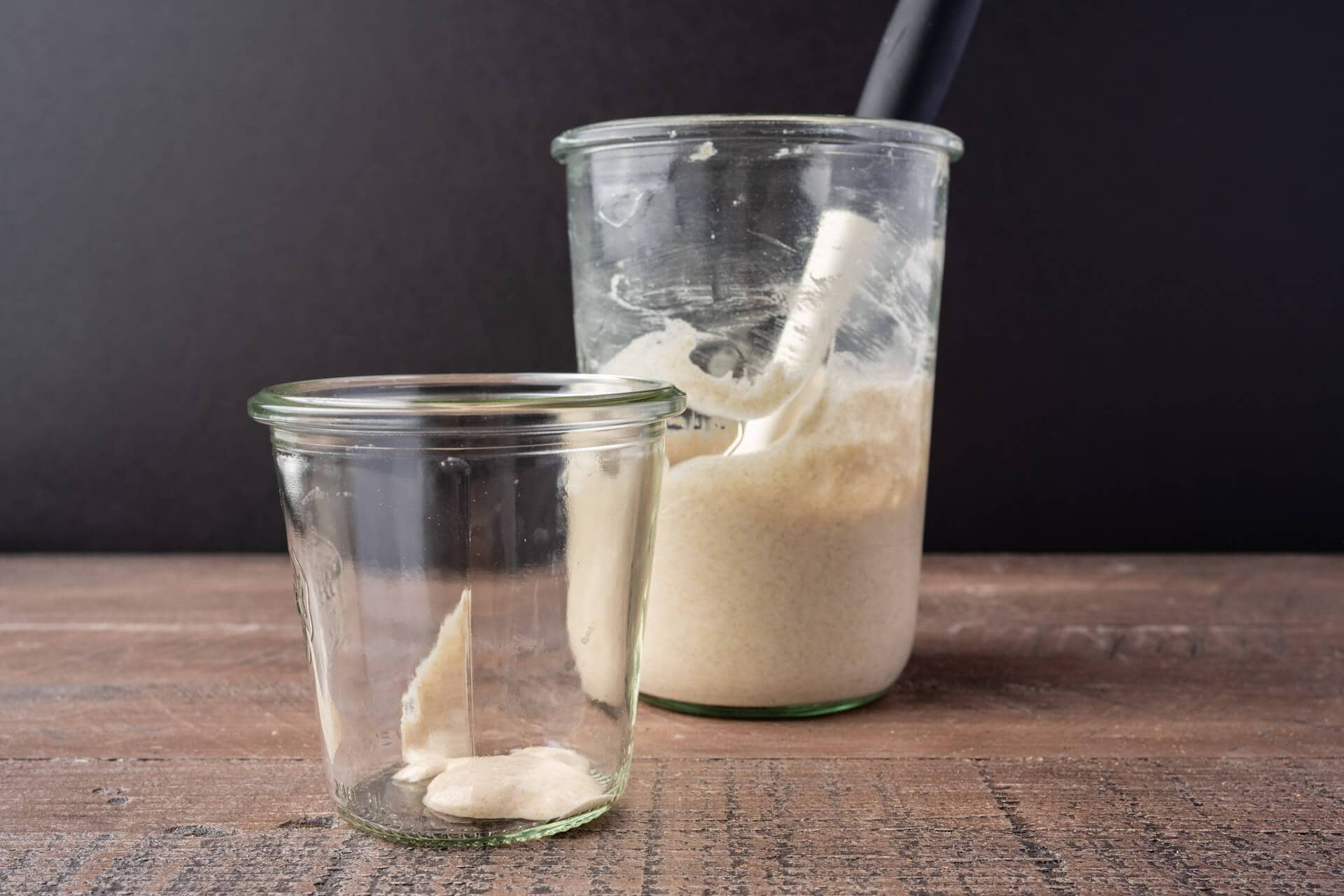
What Size Jar is Best For a Sourdough Starter?
No single-sized jar is best for every baker because it depends on how much sourdough starter they regularly need for baking. However, for most people, a 3/4 liter (28.7 fluid ounces) jar is perfect as it can store both a small sourdough starter or a large one.
The key to finding the right sized container is that it needs to be large enough to fit the starter after it's risen to its max height. If the jar is too large, your starter will spread out in the bottom, which can reduce fermentation effectiveness, get cold or hot quickly, and be harder to keep contained and clean.
The key to finding the right sized container: it needs to fit your sourdough starter after it's risen to its max height.
A 3/4 liter jar is also convenient when making a levain for a particular bake, and I rarely need a larger jar, even when baking four large loaves.
I have all of the following Weck jars and containers at home, and I use them for my starter, making a levain, or other things in the kitchen, like making seed soakers. Here's a list of the various-sized sourdough starter jars I have in my pantry and how much starter I keep.
| Starter (or Levain) Weight | Typical Use | Starter Jar Volume | My Preferred Jar |
|---|---|---|---|
| 55 to 70 grams | Small starter or Levain | 1/5 liter (9.8 fluid ounces) | Weck 1/5 Liter jar |
| 70 to 150 grams | Levain | 1/2 liter (19.6 fluid ounces) | Weck 1/2 Liter jar |
| 150 grams to 250 grams | Starter | 3/4 liter (28.7 fluid ounces) | Weck 3/4 Liter jar |
| 250 grams and higher | Large Levain | 1 liter (32 fluid ounces) | Cambro 1 Quart container (see below) |
The Largest Starter or Levain Container I Use
When doing a large bake of four or more loaves of bread, I typically need a much later container to hold my levain. In this case, I turn to a plastic 1-quart Cambro container I keep just for this purpose. These containers are typically found all over professional bakeries and are incredibly tough and versatile for all baking tasks.
While these large containers are convenient for soakers and a short-term levain, I'm not particularly eager to keep my starter in them for the long term because they are too large and made of plastic.
Other Sourdough Starter Jar Options
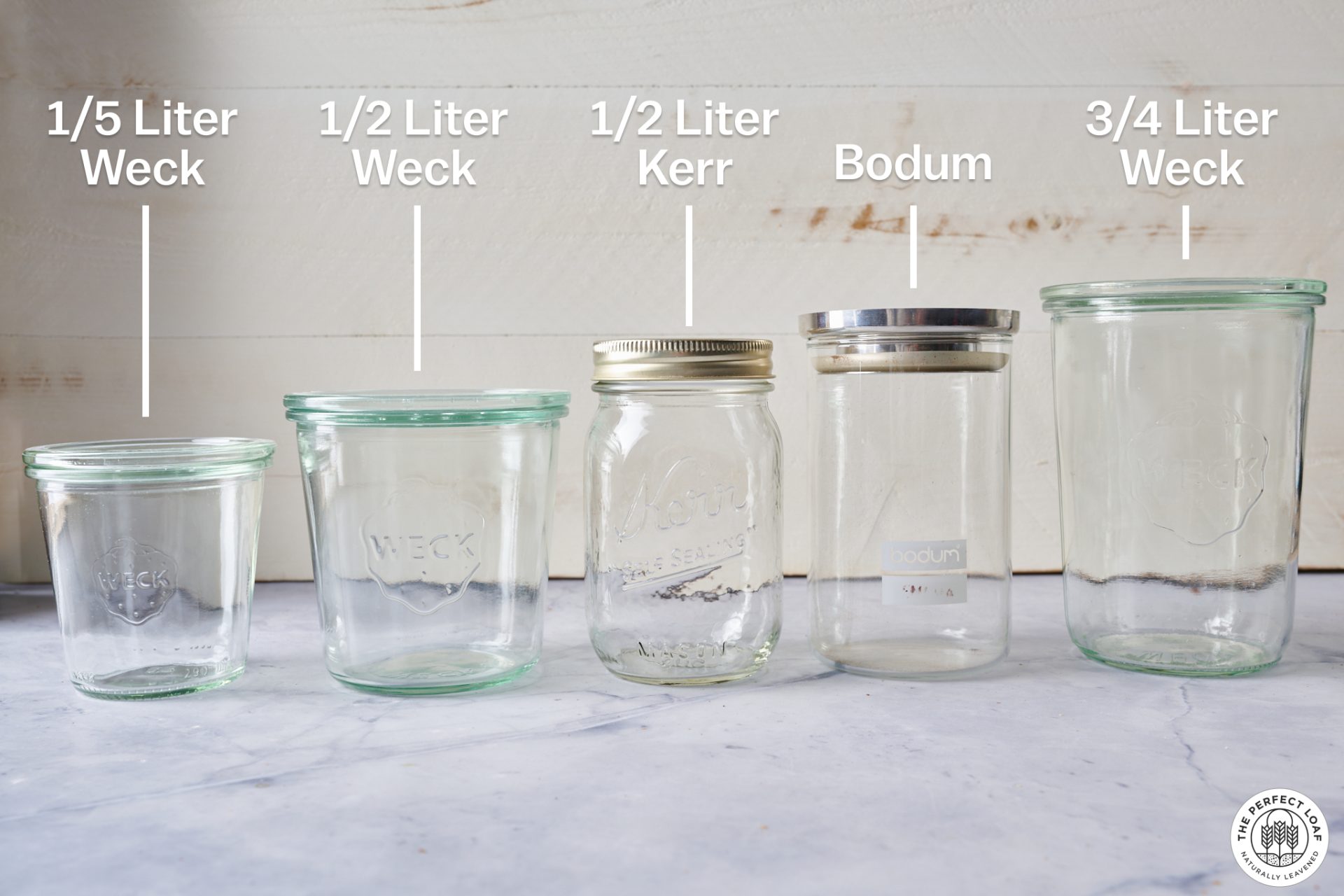
I've tried many jars over the years, from Mason jars like Ball to Kerr to Anchor Hocking to specialty jars like Bodum to no-name jars, and while each had something great about them, none of them except the Weck jar satisfied all my criteria for what makes a great jar to hold a sourdough starter.
Let's look at a few different jars I've used and why I like and don't like them.
Mason Jars like Kerr and Ball
Mason jars are glass canning jars with a screw-on lid and rounded bottom and top. These jars are widely used to hold sourdough starters, but I don't like them very much. First, getting a straight-edged spatula into the jar is hard since the mouth is tighter than the inside. Second, scraping the bottom of the jar is also tricky because of the curved bottom. Finally, the threads at the top of the jar easily get gunked up with dried sourdough starter.
Bodum Storage Jars
I like Bodum storage jars. They are made from borosilicate glass which is strong, lightweight, and remarkably thin. The lid pushes on and seals (which is ok since sourdough fermentation can be anaerobic), but it could push upward if pressure were too high due to gas production during fermentation.
I didn't ultimately choose the Bodum jars because while the glass is strong, it's prone to shattering when knocked over or dropped. These jars are great but are not as durable as Weck jars. And while the lid is nice, if the starter rises to the lid and gets on it, they are hard to clean (and I don't like putting the lids in the dishwasher).
Ceramic Sourdough Starter Crocks
There are many of these available, and they're beautiful to look at. They have thick walls for increased insulation to keep your starter warm. However, I don't like these because they can be heavy and hard to clean, but perhaps the biggest issue I have is that you can't see fermentation progress in your starter because they are not see-through like glass.
The Best Tool For Stirring a Sourdough Starter
Like the sourdough starter jar, the implement you use to mix your starter each day makes a difference. After trying countless spatulas, from wood to metal to plastic, my favorite is the Oxo Good Grips Silicone Jar Spatula.
This spatula has just the right shape: It has a flat side that scrapes perfectly against the walls of the jar, and the rounded tip reaches down into the jar to scrape out the bottom cleanly. Because it's silicone, the starter wipes off from the spatula easily, and if it gets really dirty, you can clean it in the dishwasher.
The handle of the Oxo spatula is stiff and firm, which makes stirring even a stiff sourdough starter easy. The tip is just flexible enough, allowing it to deform enough to reach hard to get to places in any jar or container.
How to Keep My Sourdough Starter Jar Clean
Each sourdough starter feeding begins by discarding some portion of the mixture into my compost or trash. First, I use my spatula to stir the starter and discard a large portion, leaving only a small bit in the jar. Then, I take the flat edge of my spatula and scrape the sides of my jar to clean out any starter stuck to the side. To clean the rim of the jar, I use a reusable and compostable cloth or a paper towel, which prevents the starter from accumulating.
Should I Cover My Sourdough Starter?
Covering your sourdough starter jar to prevent fruit flies or other foreign debris from falling inside is a good idea. When covering, I recommend using a lid that doesn't fasten tightly so that excess gasses produced during fermentation can escape.
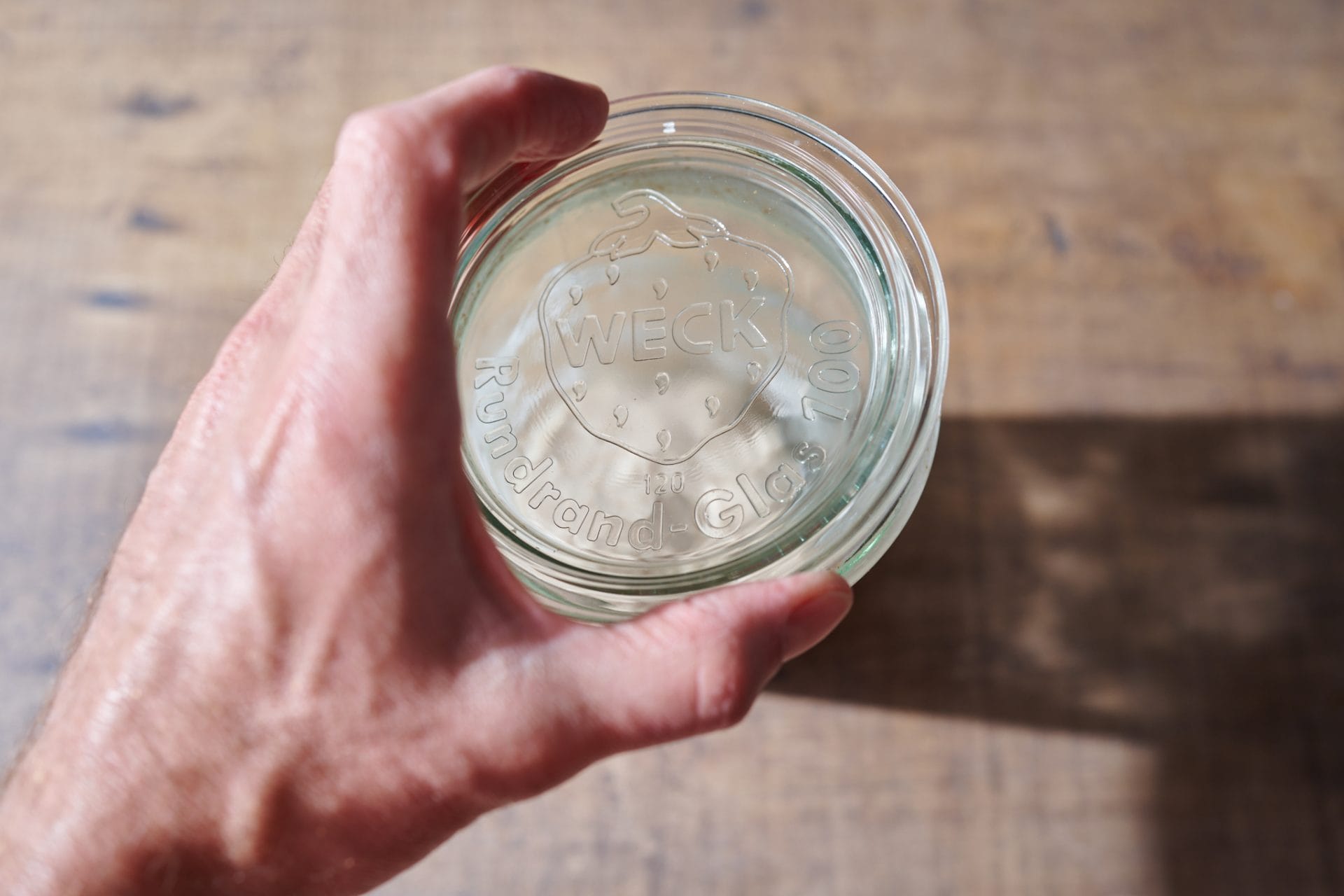
If your sourdough starter jar has a screw-on lid, you could cover it with reusable plastic, a kitchen plate, or a lid to another jar; be sure it's completely covered.
Use a Rubber Band to Track Your Sourdough Starter's Peak Height
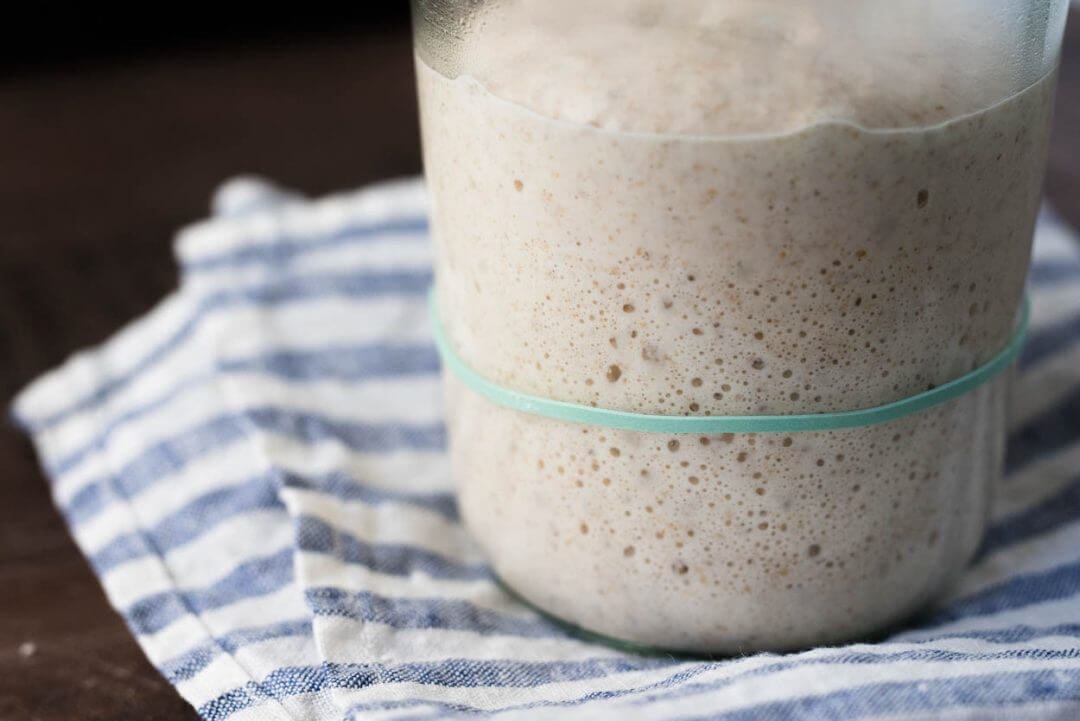
While I don't think the height of your sourdough starter necessarily tells you when it's ready for feeding, tracking its height gives you a good sense of the fermentation that’s happening. After you’ve fed your starter fresh flour and water, place a rubber band around the jar at the height of the mixture. This will give you a (reusable) method for tracking how high your starter rises during its feeding interval.
Watch Me Feed My Sourdough Starter in My Favorite Jar
In my video below, you can see my discarding, stirring, and cleaning my sourdough starter jar.
Sourdough Starter Jar FAQs
Can you store sourdough starter in an airtight container?
I prefer not to keep my sourdough starter in an airtight container because the gaseous byproducts of fermentation can lead to high pressure inside the jar, which could cause the jar to crack. I leave the lid to my sourdough starter jar loosely on top so nothing can get in, but gasses can escape. If you have a jar with a screw-on lid, rest it on top loosely, or cover it with reusable plastic or an inverted kitchen plate.
What size Mason jar is best for a sourdough starter?
If using a mason jar, I recommend a 32-ounce or 1-liter Mason jar to hold your sourdough starter. This sized jar will give your starter plenty of space to rise without the risk of overflowing.
How often should I clean my sourdough starter jar?
I wipe the top and rim of my starter jar every time I feed, which helps keep most of the jar clean. Transfer your sourdough starter to a new, clean jar whenever your current jar becomes overly crusted with sourdough starter. I typically do this once every two weeks.
What's Next?
Now that you’ve found the best jar for your sourdough starter, if you haven’t created a starter yet, now’s the time. Or, you can check out how I feed my starter each day to see how I use these starter jars in practice.
Next, if you’re looking for more bread tools, how's your bread knife? A good bread knife is one of the best investments a baker can make. After all, you've spent days making bread, so be sure you can cut it cleanly and easily!
Finally, see my collection of highly curated baking tools if you're looking for more of my favorite tools for sourdough bread baking.


